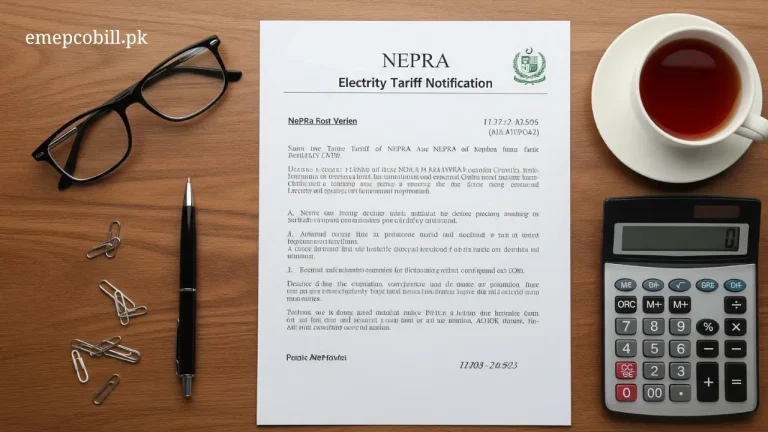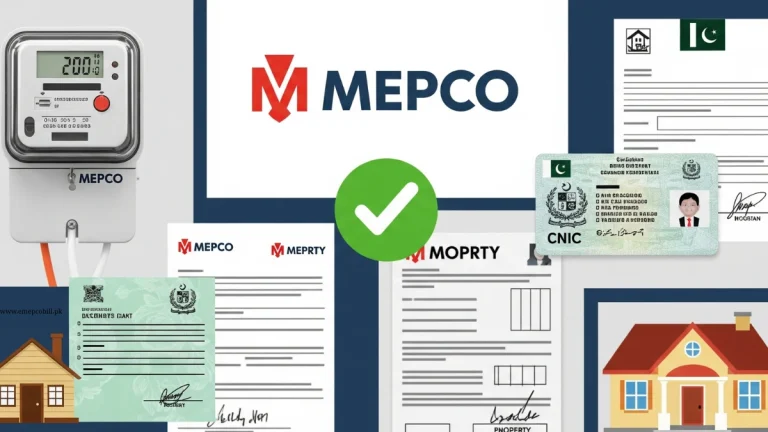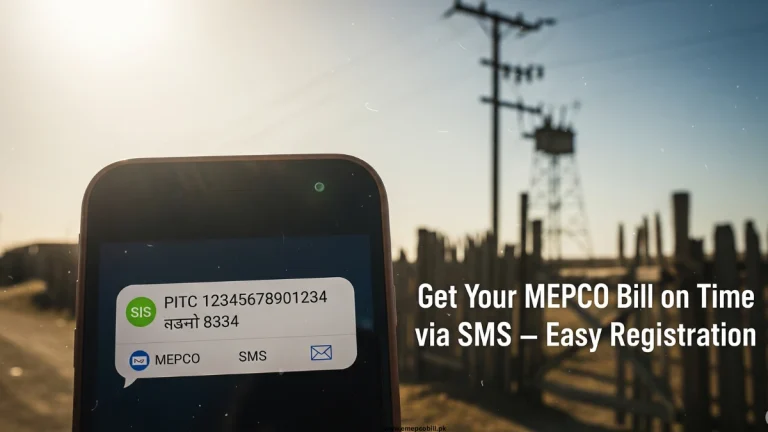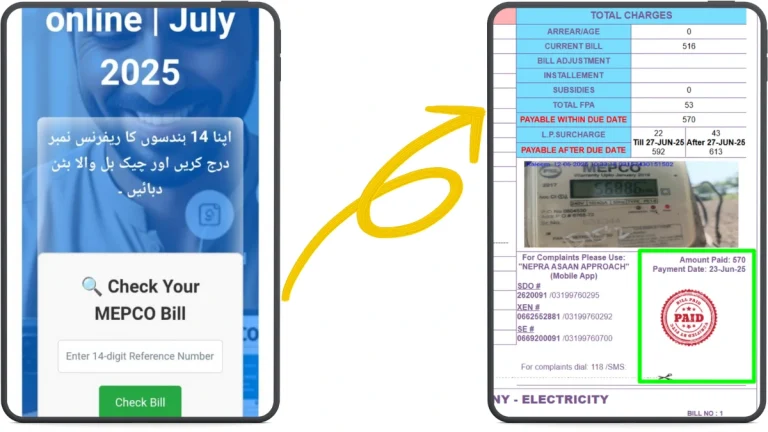LS Mean in MEPCO Bill: What Do LS and EX Indicate?
Have you ever noticed strange codes like LS or EX next to your electricity units in the MEPCO bill and wondered what they mean? If yes, you’re not alone.
These codes may look confusing at first, but they help explain how your electricity usage has been calculated, especially when your meter reading doesn’t fall exactly in a 30-day cycle.
In this short and clear guide, we’ll explain:
What do LS and EX mean in your MEPCO bill
Why do these codes appear
And how they affect your monthly units
Summary Table: LS vs EX in MEPCO Bill
|
Code |
Full Form |
When It Appears |
Action Taken |
Units Adjusted |
|---|---|---|---|---|
|
LS |
Less Supply |
After 30+ days of reading |
Units reduced |
Downward |
|
EX |
Excess Supply |
Before 30 days of reading |
Units increased |
Upward |
What is the Standard Billing Cycle in MEPCO?
Before understanding the LS and EX codes, it’s important to know how MEPCO works.
MEPCO (Multan Electric Power Company) usually follows a 30-day billing cycle. This means they aim to take your meter reading every 30 days.
However, in real-life situations, sometimes the reading is taken a bit earlier or later than the 30th day, and that’s where LS and EX codes come into play.
What Does LS Mean in MEPCO Bill?
LS stands for Less Supply.
This code appears when your meter reading is taken after more than 30 days, for example, after 32, 33, or 34 days.
Here’s what happens:
- MEPCO uses a formula called pro-rata consumption to calculate your average electricity usage for exactly 30 days.
- Then, the system adjusts the units accordingly.
Wherever units are reduced to match the 30-day cycle, MEPCO writes LS next to the units on your bill.
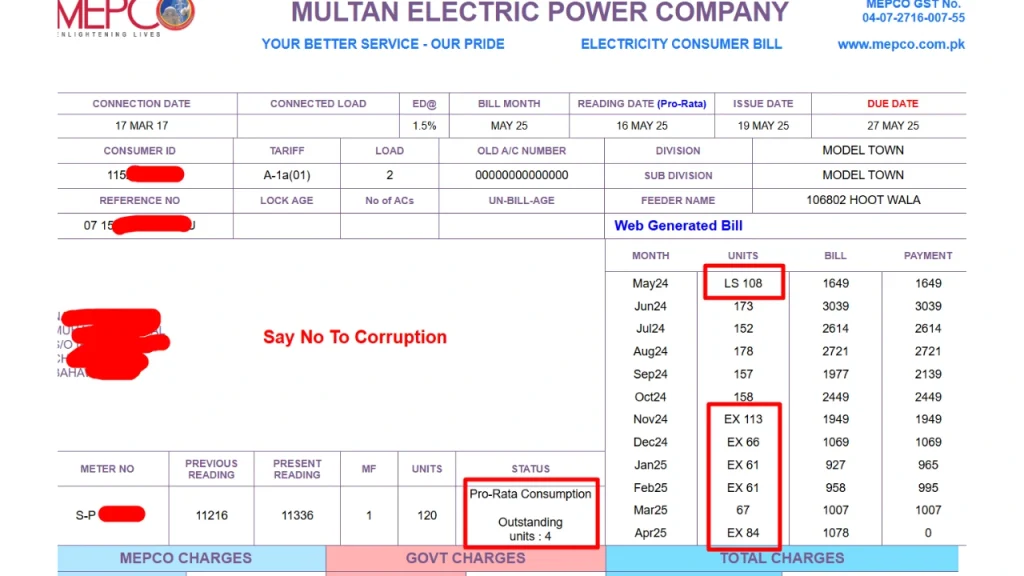
Real-Life Example
If your reading was done after 33 days, MEPCO won’t charge you for the full 33 days. Instead, they will calculate the 30-day average and only charge that, and the LS code will appear to show this adjustment.
Why LS Code Matters?
It helps you know that your units were adjusted downward, and that your bill was calculated fairly and transparently.
What Does EX Mean in MEPCO Bill?
EX stands for Excess Supply.
This code appears when your meter reading is taken before 30 days, for example, after 28 or 29 days.
Here’s what MEPCO does in this case:
- Again, it calculates the average for 30 days, based on your current usage.
- It then increases the units to match the standard billing cycle.
Wherever units are increased, the code EX is added next to them in the bill.
Real-Life Example
If your reading was done after only 28 days, as is common in February, MEPCO will still estimate your average for 30 days and charge you based on that. The EX code will appear beside the units to show this.
Why does EX Code appear?
It shows that MEPCO has adjusted the reading upward to match their 30-day policy — again, keeping the billing system fair and uniform.
Why Does MEPCO Use LS and EX Codes?
MEPCO follows a pro-rata billing method to ensure uniformity, no matter when the reading is taken.
These LS and EX codes are used to maintain
- Transparency
- Accuracy
- And trust between MEPCO and the consumers
By adding these codes, MEPCO gives you a clear view of whether your usage was slightly adjusted due to early or delayed meter reading.
Where to Find LS and EX Codes on the Bill?
If MEPCO has made any adjustments in your units, you’ll find LS or EX written next to the unit count in the “Current Reading” section.
You might also notice a variation in the billing days in the meter reading section — this helps you confirm why the code was added.
Final Words: Don’t Worry If You See LS or EX
Seeing LS or EX in your MEPCO bill is not a problem.
These are internal billing adjustments based on a technical formula. You are only being charged for what you would normally consume in a standard 30-day period.
This method ensures fairness and keeps things consistent for all consumers.
According to MEPCO policy, these adjustments are part of a standard practice to avoid overcharging or undercharging customers. So if you ever see LS or EX, now you know what it means.
Need Help Understanding Your MEPCO Bill?
If you’re still confused about your MEPCO bill or want to confirm your reading cycle, it’s a good idea to:
- Contact the MEPCO helpline
- Visit your nearest MEPCO office
- Or use the online MEPCO bill check system
Staying informed helps you avoid confusion, and now that you understand what LS and EX mean, you’re already ahead of most consumers!

